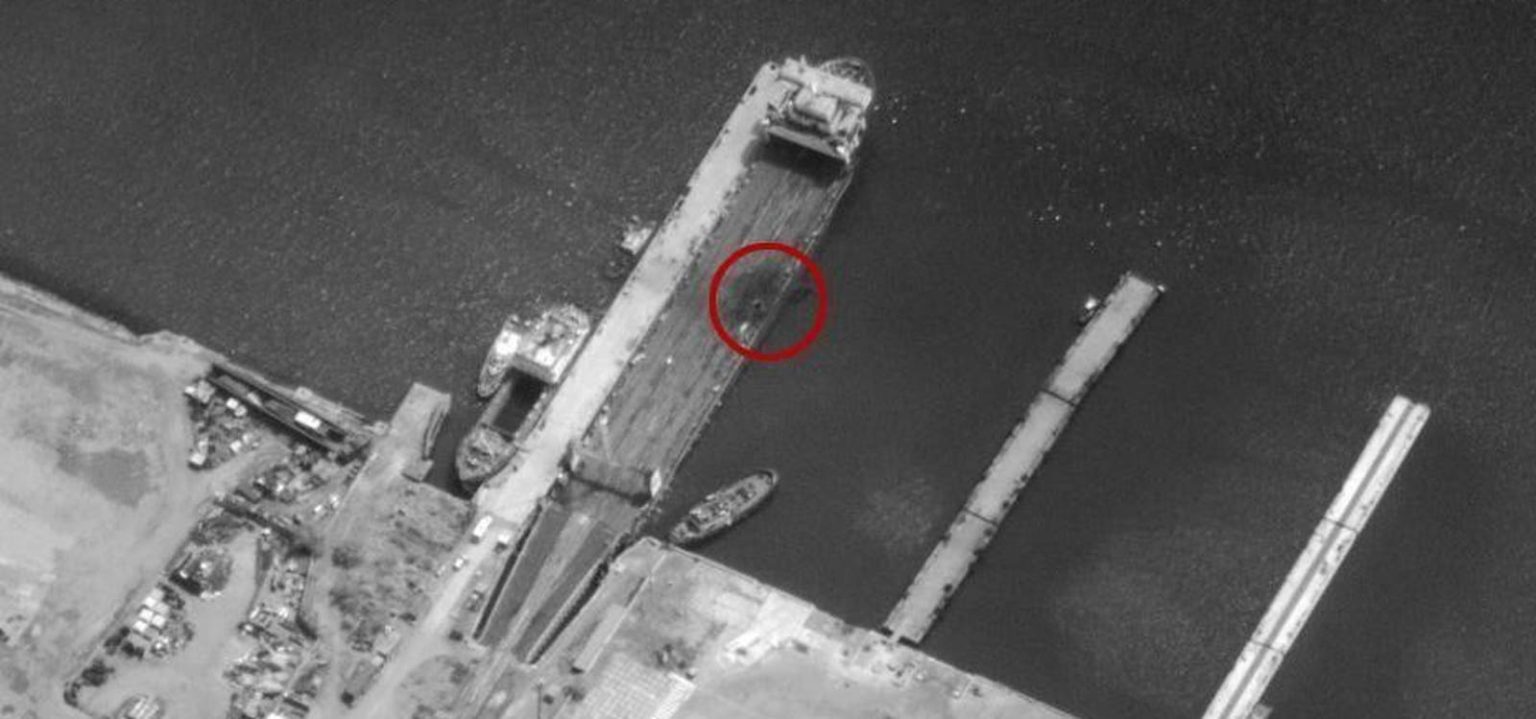There are just a few ways to move large quantities of cargo into Russian-occupied Crimea from Russia proper: by sea, by road and rail over the Crimean Bridge spanning the Kerch Strait, by ferry across the same strait and by rail through southern Ukraine.
One by one, Ukraine has struck each of these supply lines. The most recent to get hit was the ferry crossing. On Wednesday night or early Thursday morning, the Ukrainian army’s American-made Army Tactical Missile System precision-guided rockets struck the ferry landing in Crimea, damaging if not destroying two ferries: one for hauling cars and trucks, another for transporting trains.
Satellite imagery confirmed the damage. The ferry crossing “was actively used by the enemy to support their grouping of troops in the temporarily occupied Crimea,” the Ukrainian general staff reported.
But it’s not clear how much the southern troops relied on the ferries. The flat-bottomed vessels were always a backup to more secure and voluminous modes of transportation. And the most secure and voluminous of those, the southern railway, is intact—and extremely difficult to destroy.
All that is to say, blowing up a couple of Russian ferries might please friends of a free Ukraine. But it won’t do much to actually harm the Russian regiments and brigades in occupied southern Ukraine.
Strikes on the Kerch crossings “are more political than military and aim to put pressure on Putin in front of the Russian people,” Mick Ryan, a retired Australian army general, wrote in his newsletter.
Ukraine’s campaign targeting Russian logistics in southern Ukraine has grown in scale and sophistication since the early weeks of Russia’s 27-month wider war on Ukraine.
First the Ukrainians began targeting—with rockets, Storm Shadow and SCALP cruise missiles and explosive drone boats—the Russian Black Sea Fleet’s cargo-hauling landing ships, ultimately sinking or damaging most of the roughly dozen vessels.
Last summer, Ukrainian forces bombed and damaged the Crimean Bridge. It took Russian engineers six months to fully restore the spans. And this week, the Ukrainians finally targeted the ferry crossing.
The distance from the front line to the ferry landing, around 150 miles, strongly implies the Ukrainian army fired some of its new M48 or M57 ATACMS, respectively ranging 170 and 190 miles with a 470-pound warhead.
Ukraine got M48s or M57s as part of its second big batch of a hundred or more ATACMS back in April. An earlier batch of a couple of dozen ATACMS, last year, only included M39 models with cluster warheads—a thousand grenade-sized submunitions—and a 100-mile range.
The farther-flying ATACMS have devastated Russian airfields, air-defense batteries and docked warships across Crimea. That they pose a serious threat to ferries should come as no surprise.
But it’s unclear how much it really matters any more. Perhaps sensing the coming Ukrainian deep-strike campaign, last summer the Kremlin expedited construction on a new 50-mile stretch of railroad connecting existing rail lines in Russian-occupied eastern and southern Ukraine.
“This route also significantly reduces travel time from Russia to Mariupol [in southern Ukraine], shortening it by days and sometimes weeks, making logistics and troop movements more efficient,” Ukrainian analysis group Frontelligence Insight reported. “Our team assesses that this new railroad would suffice to supply the region even if the Crimean Bridge is destroyed.”
It should also more than make up for any reduction in ferry traffic across the Kerch Strait.
It’s not impossible to interdict a railroad, but it’s hard. “In the past, when Ukraine attempted to target the railroad bridge connecting Crimea with the rest of Ukraine, missiles such as SCALP [and] Storm Shadow caused relatively minor damage that did not significantly disrupt railroad operations for long,” Frontelligence Insight explained.
It’s equally hard to hit the trains themselves, according to Frontelligence Insight. “It’s likely that the Russians minimize train movement during the daytime, focusing more on nighttime and early morning operations to reduce the visibility of logistical movements.”
But as Ukrainian munitions sever alternative supply lines and the Russians consolidate their logistics on the southern railroad, the Ukrainians may concentrate on causing lasting damage to the tracks and trains.
They may begin by targeting the new east-to-south connector—especially where it crosses bridges. “Ukraine currently possesses the means to seriously damage this link, potentially rendering it unusable for weeks or even months,” Frontelligence Insight reported. “However, this depends on multiple factors, such as the number of air-defense systems Russia is willing to allocate to protect vulnerable spots, especially bridges.”
If there’s any reason to be hopeful for Ukraine’s possible counter-rail campaign, it’s that Russian air defenses are stretched very thin right now as the Kremlin struggles to defend occupied territory from Ukrainian drones, cruise missiles and rockets while also protecting industrial sites, radars and airfields in Russia proper.
Sources:
1. Ukrainian general staff: https://t.me/GeneralStaffZSU/15069
2. Mick Ryan: https://mickryan.substack.com/p/the-campaigns-of-ukraine-part-2
3. Frontelligence Insight: https://frontelligence.substack.com/p/new-railroad-branch-improving-russian
Read the full article here





